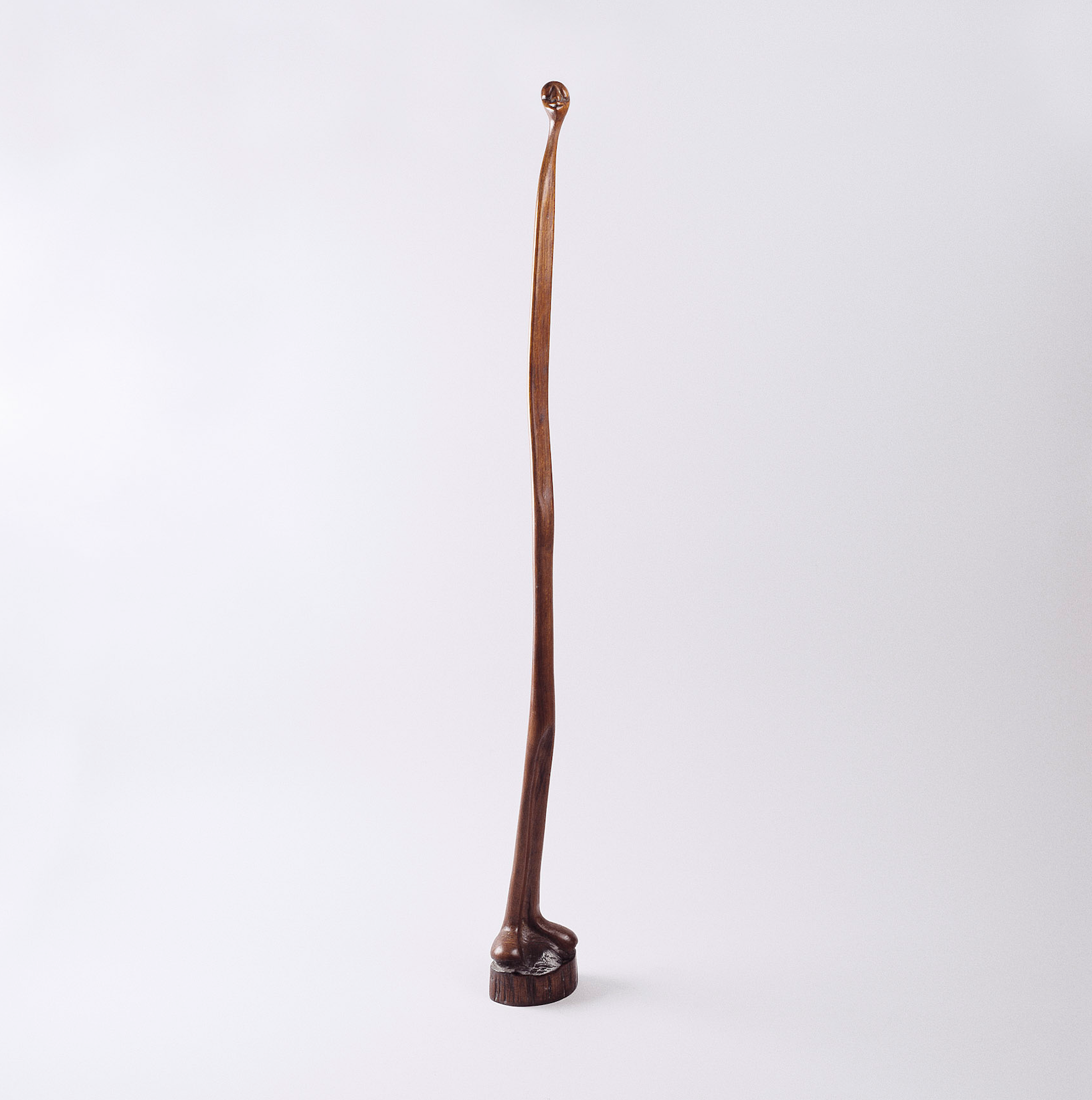Lucas Sithole
Elongated Figure is an object of refined delicacy and elegance. Carved from a single branch of Rhodesian teak, the slender figure is described in only the sparest details – the suggestion of a face at its apex and, at its base, two feet. Sanded to the smoothest finish and undulating with the wood’s natural shape, the sculpture’s form evokes the mythological snake to which Sithole so often referred. For all its formal considerations, for the beauty of its material lightness, the work exists in the service of allegory and folklore. The figure appears as a conduit between the tangible and the spiritual, bound to the earth but reaching always skyward.
b.1931, Springs; d.1994, Pongola
Among Lucas Sithole’s most astonishing works are those he sculpted from indigenous wood. “A tree,” he told writer Peter Anderson, “is like a human being…the branches represent the veins.” Then – “Stone is just a material.” And, later – “I always try to get the inside…” Where clay broke too easily, stone gave too little, and metal lacked warmth, wood offered the artist not only an ideal medium but the suggestion of form. He worked on salvaged branches, finding his many figures hidden beneath the bark. While Sithole’s sculptures made in other materials share a solidity in weight and form, his wooden works are more often slight and long, just as the tapering boughs from which they are carved. The artist spoke often of an Eswatini myth his grandmother told him, the story of a snake who lives in the rivers but longs for the sky. On the rare occasion its powers allow it to rise up to the clouds, the snake appears as a tornado, twisting upwards, only to fall back down to the river as rain. “This is why some of my figures are long,” Sithole said, evoking the fable’s unfulfilled desire, “they are longing for heaven.”
